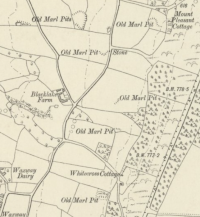I do like Maps and even better are older maps - today I learnt something ( quite possibly slow on the uptake ) of why I tend to see 'Marl' in so many old roads or streets. Never really thought to question it until using an older map.
Marl - https://en.wikipedia.org/wiki/Marl
History of use:
Just sharing for the ignorant like myself.

Marl - https://en.wikipedia.org/wiki/Marl
History of use:
- Marl was used in Britain as early as prehistoric times.
- Its use became more widespread in the 16th century, contributing to the agricultural revolution.
- Marl was used extensively in Britain in the 18th century.
- Marl was gradually replaced by lime and imported mineral fertilizers in the early 19th century.
Just sharing for the ignorant like myself.


